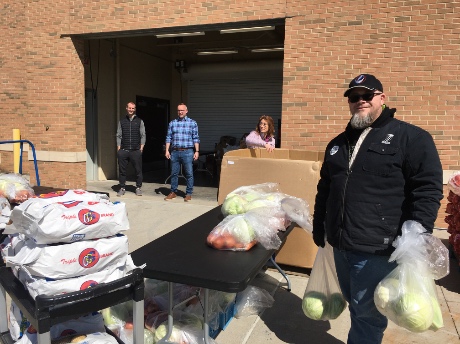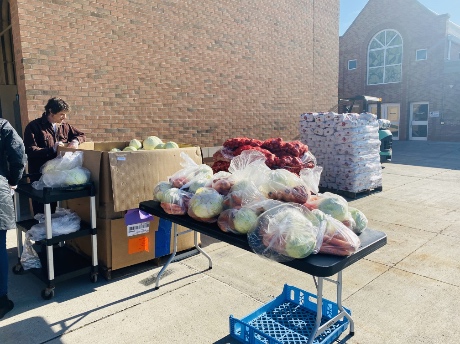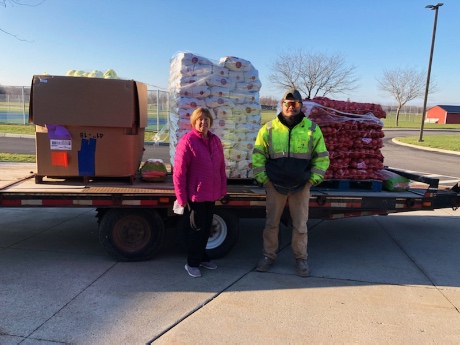In tough times, local farmers donate food to help keep our families fed: 'It's what we do'

Above: Byron-Bergen Central School District staff at food distribution site. Photo courtesy of Mickey Edwards.
Submitted photos and information from Byron-Bergen Central School District:
BERGEN -- In the wake of school closings, mandatory social distancing, and the economic downturn, food insecurity is a rising concern. Byron-Bergen Central School District has organized meal pickups to provide breakfast and lunch to school-aged children five days a week, but some local farmers decided to take it a step further.
On Thursday (April 2) a trailer piled with potatoes, onions, carrots, and cabbage pulled into the Byron-Bergen High School parking lot -- a gift to the community from five farms in Genesee County: Mortellaro Farms, Star Growers, Stymus Farms, Torrey Farms, and Triple G Farms.
The produce was distributed directly to community members during their regular school meal pickups for about 300 students at the High School bus loop.
The drop-off was organized with the help of Byron-Bergen Central School District's kitchen manager Rozanne Klycek, who got the idea from a family member at Star Growers in Elba, Barbara "Barbie" Starowitz.
The Byron-Bergen alumna has been in contact with other local farmers, eager to help in these uncertain times. Since the District was already distributing food, the farmers thought it was the perfect way to reach community members in need.
"It's just all of us farmers helping each other out," Starowitz told The Batavian this evening. "We always help out the community in times like this. It's not unusual. It's what we do."
In the space of a mere week, hundreds of pounds of produce has been donated by the farmers help people fight food insecurity -- at the giveways at Northgate Church in Batavia, to help stock Harrington's Market and local food pantries, which many seniors increasingly rely on. They plan on donating to Elba Central School on Monday.
“This community never ceases to amaze me,” said Byron-Bergen Superintendent Mickey Edwards. “I am truly humbled by the generosity of these farmers. It was an honor to help carry 10-pound bags of potatoes out to cars, knowing the relief it will provide to our families.”
Below, produce donated by local farmers being prepared for distribution. Photo courtesy of Susan Kuszlyk.
Bottom: Byron-Bergen kitchen manager Rozanne Klycek and Adam Starowitz from Star Growers during produce drop off. Photo courtesy of Susan Kuszlyk.


